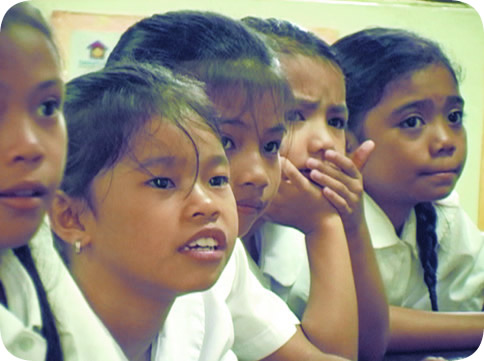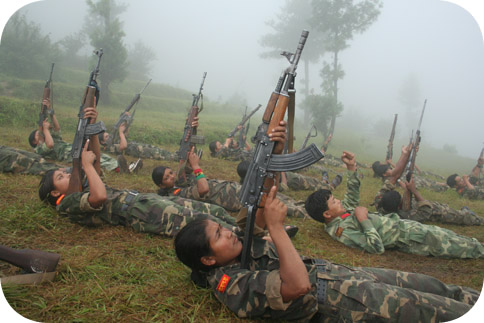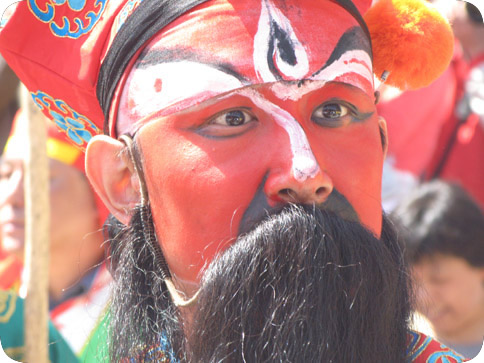|
Join Our List
|

|
|
|

|
LETTER FROM THE EDITOR
| |
The 2013 winter issue of the AEMS Newsletter includes for reviews that should be of interest to a variety of audiences. "Families of the Philippines," reviewed by Roger Bresnahan, will probably find most interest among educators working with younger learners. Per Kværne offers a review of "Bon: Mustang to Menri," a film which draws attention to the relatively little-known Bon religion of Tibet, which has long found itself in the shadow of the much better known Tibetan (Geluk school) of Buddhism. "Woman Rebel," reviewed by Tim Lubin, should be of particular interest to those teaching about women's issues and women in Asia, and last but certainly not least, Ryoko Sakurada describes for us and highlights the value of the film work of an ethnologist in China in the 1980s. With the rapid changes China has undergone in the last three decades, this film in particular may constitute a record of local life and culture in China that today may be increasingly hard to find. William Londo |
|
FILM REVIEW
| | |
Families of Philippines
Directed by Eleanor Marquisee. 2011. 30 minutes.
In English.
Reviewed by Roger Bresnahan.

The Families of the World series, which has garnered a large number of awards, offers an introduction to various countries through visual images, daily activities, and narration by a girl and a boy in the age-range of the target audience - elementary through middle school. Daily activities of the narrators, the economic situation of their families, the social fabric of their communities, the activities of school life and recreation, and the gathering and preparation of food effectively convey the message that the world is really just peopled by 'kids like us.'
Through this predictable formula, the series can easily lend itself to comparative social studies, especially with the online teacher's guide containing a compendium of economic and societal data. The images provide a rich understanding of how people live and dress in their ordinary lives. The narrators are a 12-year old boy named Khim, who is in the first year of high school, and a 7-year old girl named Shahani, who is in middle school. Khim lives with his grandparents in a coastal village on the island of Cebu, and Shahani lives with her parents and a younger sister in a market town in Bulacan on the island of Luzon, 50 km north of Manila.
Khim attends a school with ten thousand other students, tends to the family's small goat herd, gathers wood for the fire in the outdoor kitchen, and is responsible for starting the rice for dinner each day. On his walk home from school each day he stops at an arcade to watch youtube videos. Shahani is also in a large school - five-thousand. She and her younger sister take dance lessons taught by her father, who also works on weekends as a children's entertainer at a Manila area mall. Both of the children subtly demonstrate the efficiencies of their family's lifestyles within their own environments. For example, Khim pointedly comments that the bamboo-slat floors of the home allow sand to drop through and air to circulate. Khim also demonstrates that the chickens, goats, and family garden plots contribute to self-sufficiency.
READ MORE...
|
| FILM REVIEW | |
Bön: Mustang to Menri
Directed by Tad Fetttig. 2011. 52 minutes.
In English.
Reviewed by Per Kværne.

If you say "Tibet," the next word that comes to mind will probably be "Buddhism." This is all the more likely as by far the most famous Tibetan is the Dalai Lama, the charismatic Nobel Peace Prize laureate (1989) who for decades has traveled all over the world to spread his message of compassion and individual responsibility to statesmen as well as countless ordinary men and women.
Yet - and this may come as a surprise to many - not all Tibetans are Buddhist, even aside from the tiny Muslim and Christian minorities inside Tibet. Many Tibetans are followers of a religious tradition known by its Tibetan name "Bön," which is found especially in the eastern and northeastern parts of Tibet, i. e. in areas lying outside the so-called Tibet Autonomous Region, but within the historical and cultural borders of the Tibetan nation.
It is a belief shared by all Tibetans that Bön was a flourishing religion in Tibet, especially at the royal court, at the time when Buddhism was introduced in the 7th and 8th centuries CE. As opposed to Buddhist Tibetans, however, the followers of Bön (known as Bönpos) claim that Bön rather than Buddhism is the universal, true, and most effective path to spiritual enlightenment. Furthermore, they maintain that the founder of Bön, Tönpa Shenrap ("The Teacher Shenrap"), was the ruler of a kingdom to the west of Tibet, and that he lived long before the Buddha appeared in India. Hence Bönpos, in spite of sharing a common culture and way of life with other Tibetans, including a well-established tradition of monastic life, regard themselves as representatives of a distinct religion, and this is how by other Tibetans regard them as well.
READ MORE...
|
| FILM REVIEW | |
Woman Rebel
Directed by Kiran Deol. 2010. 37 minutes.
In English and Nepali, with English subtitles.
Reviewed by Timothy Lubin.

From 1996 to 2006, Nepal was wrenched by a bloody internal conflict that pitted a Maoist-inspired insurgency against a dissipated monarchy presiding over a weak parliament. Kiran Deol has produced a moving film that recounts this conflict through the eyes of Uma Bhujel, "codename: Silu," a poor village girl turned revolutionary. Interspersing scenes of her in uniform in the People's Liberation Army, archival footage of battles, insurgent training camps, and political events, and interviews with Silu and members of the family she left behind, we follow her rise from footsoldier to battalion commander.
When peace is negotiated in 2006 and the Maoists enter the political process, Silu is elected to the new Constituent Assembly. Now we see her as an increasingly confident and articulate politician, returning at last to her native village to be reunited with her parents and childhood friends.
Throughout it all, Silu frames her decision to join the revolution in terms of her aspiration to improve the condition of women in her country. We hear of a galvanizing tragedy from her childhood: the suicide of her older sister, who had been married off at twelve and mistreated by her in-laws, only to return home and hang herself in despair.
The film opens with scenes of women sweeping and winnowing rice. In a voiceover, we hear Silu: "They used to say that when the rooster crowed, the hen could only listen. They used to say that when the women pick up guns, they won't work." Silu was attracted to the Maoists by their egalitarian ideology and their rejection of traditional class and gender disparities. 40% of the Maoist combatants were women, and she was proud to wear the uniform and fight alongside the men.
READ MORE...
|
| FILM REVIEW | | |
Diary of an Ethnologist in China
Directed by Patrice Fava. 2009. 45 minutes.
Reviewed by Ryoko Sakurada .
 This film is a unique ethnographic documentary on China in the late 1980s by French scholar and filmmaker, Patrice Fava. With support from local researchers, the Chinese Ministry of Television, and local television networks, Fava dexterously did most of the camera work, sound engineering, directing, and editing by himself in order to describe dimensions of Chinese life and worldview through the eyes of an ethnologist. In the film, Fava travels across the People's Republic of China from the big cities of Chengdu and Shanghai to the small villages of Hunan and Shanxi provinces. There, he observes people's ordinary lives and beliefs, and as an ardent ethnologist, he visually records, in detail, what people were eating, celebrating, cherishing, talking about, and praying for. In this way, we can relive the experiences of the ethnologist, seeing firsthand where he went and what he saw in China. At a glance, however, audiences may have an impression that the film is just filled with a series of scenes of lively China. Fava does apparently seem to pick up eye-catching scenes at random, but the smooth sequence of scenes vividly depicts an image of China in which the beautiful resonance between human beings and nature is observed. Also, the rich visual description of people's ordinary lives and faiths in China during the late 80s should be highly appreciated as valuable firsthand ethnographic data for this era. The film begins with the scene of a Buddhist monastery in Chengdu, the capitol city of Sichuan province. On July 5th, Fava's camera captured images of devoted monks and nuns pursuing closing day rituals at 6 o'clock in the evening. He describes how the religions and myths of China have been maintained for over 1,000 years. Depictions of colorful images of people's lives are followed by a sequence showing people's practices of Duan Wu Jie, also known as the Dragon Boat Festival, on the fifth day of the fifth lunar month. READ MORE... |
AAS FILM EXPO 2013
| |
 AAS Film Expo 2013: Extraordinary Lives, Everyday Asia AAS Film Expo 2013: Extraordinary Lives, Everyday Asia will take place Thursday, March 21 - Saturday, March 23 at the Manchester Grand Hyatt in San Diego, CA as part of the Association for Asian Studies annual conference. Organized by AEMS since 2011, AAS Film Expo 2013 will feature twenty-eight Asia related films produced by scholars and independent filmmakers. While most of the program is dedicated to documentary films on Asia, please note that each evening concludes with an independent feature film. Short Q&A's with filmmakers and film representatives follow many of screenings. The AAS Film Expo 2013 Screening Schedule is available here.If you are planning to attend the conference, please stop by Maggie on the 3rd level of the Manchester Grand Hyatt to view a film or just to say hello. If you miss a scheduled film, you may have the opportunity to view it in our new on-demand viewing space next door to the screening room. All screenings are free and open to the public. Conference registration fees are not necessary for attending AAS Film Expo 2013. This program is supported by the Asian Educational Media Service, the Center for East Asian and Pacific Studies at the University of Illinois and the Association for Asian Studies.
|
| AsiaLENS FILM SERIES | |
AsiaLENS is a series of free public film screenings and lecture / discussion programs -- organized by AEMS in collaboration with the Spurlock Museum -- presenting recent documentary and independent films on issues reflecting contemporary life in Asia. Local and visiting experts introduce the films and lead audiences in post-screening discussions.
All AsiaLENS screenings are FREE and open to the public.
Our upcoming screenings are:
Bön: Mustang To Menri
Tuesday, March 12, 2013 - 7:00 pm
Spurlock Museum, 600 S. Gregory Street, Urbana IL
Wednesday, March 13, 2013 - 7:00 pm
Urbana Free Library, 210 W. Green Street, Urbana, IL
Witnesses to a Secret War Tuesday, April 9, 2013 - 7:00 pm Spurlock Museum, 600 S. Gregory Street, Urbana, IL Wednesday, April 10, 2013 - 7:00 pm Urbana Free Library, 210 W. Green Street, Urbana, IL CLICK HERE FOR MORE INFO
|
| WEBSITE: DIGITAL ASIA | |  Digitial Asia, a website bringing documentary films on contemporary East Asia to the classroom, has been launched by the Asian Educational Media Service (AEMS). In providing free access to excerpts of scholar made films on Asia, along with downloadable curriculum materials, Digital Asia offers high school and college educators an easy way to incorporate today's issues in Asia as part of their lesson plans. Digital Asia can be found at: www.digitalasia.illinois.edu Digital Asia is funded by the Freeman Foundation of Stowe, VT., New York City and Honolulu and by the IL/IN East Asia National Resource Center funded by U.S. Department of Education Title VI. |
|
| SUPPORT AEMS | | AEMS invites our supporters to make targeted donations to enhance our holdings and public programs. A donation of $30 can be used to purchase a film for the AEMS library. $300 will sponsor an AsiaLENS screening on campus or in the Champaign-Urbana community. $500 will help underwrite a film and curriculum materials in Digital Asia. Donations for specific materials or events will be acknowledged both in News and Reviews and at sponsored events. Thank you for your ongoing support of AEMS.
Follow this link to make an online donation.
PLEASE NOTE:
You will be directed to the CEAPS Giving page.
After clicking "Continue With Your Donation" you will find a Special Instructions section where you can highlight "yes" under the question "Do you have other instructions for processing your gift?"
A text box will open where you can direct your gift to the following:
AEMS - Asian Educational Media Service Fund -or- Digital Asia Fund
|
NEWS AND REVIEWS
| | Previous issues of News and Reviews:
Electronic newsletters - September 2010 - Fall 2012
Archived print newsletters - Spring 1998 - Fall 2009
|
| ABOUT AEMS | | Media Production Group
In addition to hosting film screenings, AEMS also produces and distributes its own materials under the brand name Media Production Group (MPG) . These are short educational videos and DVDs about an aspect of Asian culture suitable for classroom use and accompanied by curriculum.
Database
AEMS maintains a searchable database of over 6,000 films about Asia, including length, format, distributor and synopsis.
Library
AEMS library, through its connection to the Lincoln Trails library system, circulates videos and DVDs locally from its collection of more than 2,000. |
| Asian Educational Media Service
805 W Pennsylvania Ave, Urbana, IL 61801
|
|